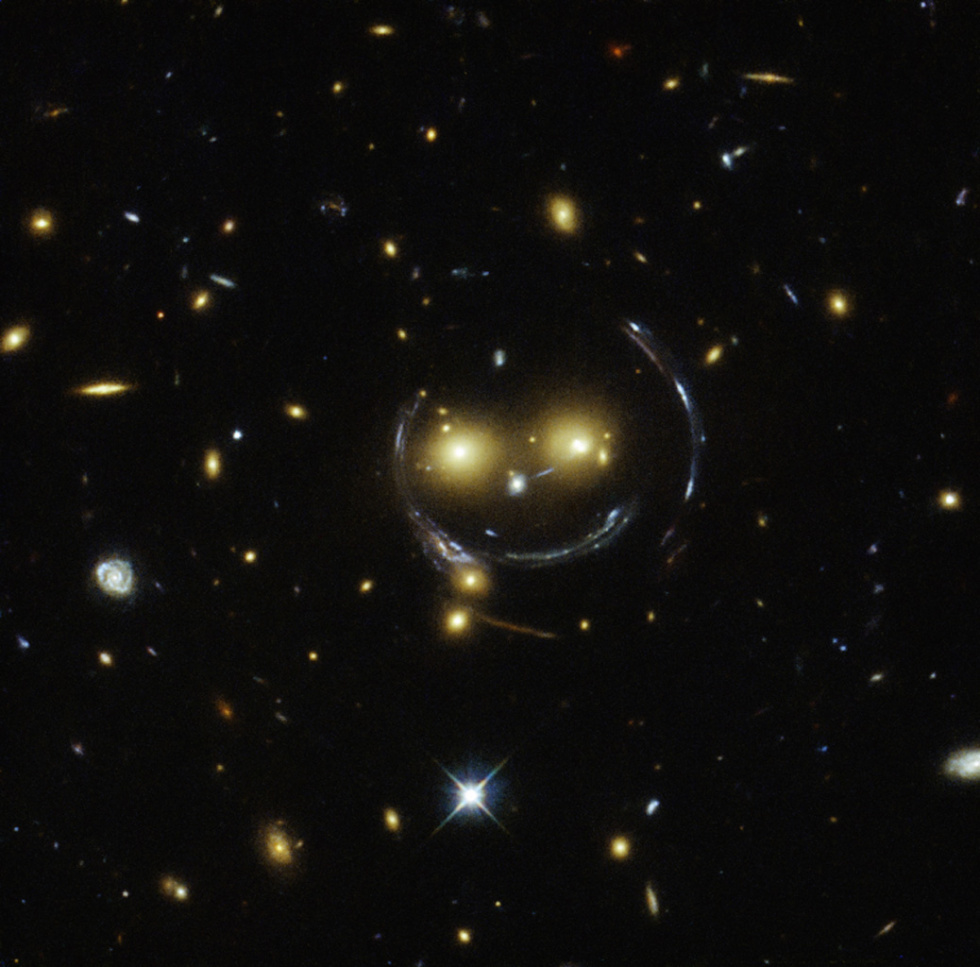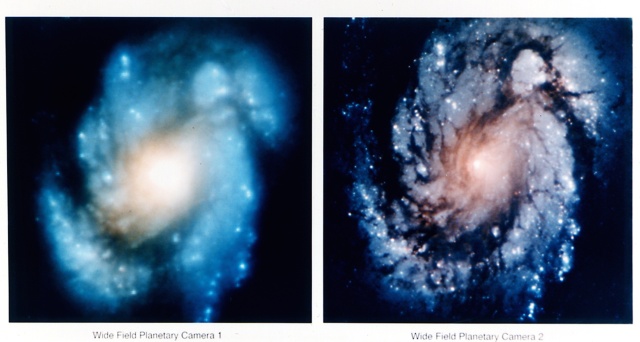
Twenty five years ago today, the Hubble Space Telescope was taken to orbit by the Space Shuttle Discovery. It wasn't an easy road to space for the observatory, and NASA would shortly discover troubles with its primary mirror that would raise questions about whether it could ever live up to its initial promise. At one point, so many onboard gyroscopes had failed that scientific observations had to be stopped.
But Hubble was a rarity: a space-based telescope that was designed for servicing. Five missions over the course of its time in space have not only replaced critical hardware like batteries and pointing devices, but have completely replaced the onboard instrument suite with updated equipment. Five servicing missions have allowed Hubble to make contributions to countless discoveries—in many cases, the discoveries couldn't have been made without it.
Delays and defects
Hubble's successor in orbit, the James Webb Space Telescope, has been plagued with massive cost overruns. It's currently running over five years late for its planned launch, and costs have nearly quadrupled, getting so bad that Congress threatened to kill it a few years back. This might make you wonder why NASA couldn't get its act together the way it did on the Hubble.
Anyone who thinks that doesn't know their history. Even before any hardware was built, cost issues caused NASA to scale down the size of the primary mirror and turn to the European Space Agency for money, bringing the ESA on as a partner in return for access. The production of Hubble's primary mirror, contracted to a scientific instrument company called Perkin-Elmer, caused the same sorts of problems we've seen with the James Webb, with regular schedule slips and costs exploding. Then, by the time the telescope was finally ready for orbit, the Challenger explosion had brought the entire US launch program to a halt.
I don't recall the launch that put Hubble into space. But I definitely remember the national news reports a few weeks later: the primary mirror, the one that caused so many delays, was defective. Hubble's view was far blurrier than the design called for. Dr Patrick McCarthy, who was hoping to use Hubble for some of his research at the time, told Ars, "When Hubble was launched, they turned on that camera and started taking pictures, and they understood that initially it wouldn't be in focus. The pictures didn't look so great, so they adjusted the focus, and they couldn't ever get the pictures to be very sharp."
Behind the scenes, NASA moved quickly to identify the source of the problem. It turned out that the mirror was ground precisely to specific measurements—it was just that the measurements were calibrated wrong. Because the error was consistent across the mirror, it would be possible to create equally specific optics to correct for it. By removing one of the onboard instruments, NASA found it could insert corrective optics into the light path, sharpening the focus to the remaining instruments. McCarthy told Ars that NASA's Goddard Space Flight Center now has a light source that exactly mimics the defect in Hubble's main mirror, allowing anything that's destined for space to be thoroughly tested on the ground before being installed.
It took until 1993 for the hardware to be installed in the observatory. The results were nothing short of remarkable.

Regular renewal
But the mission to produce Hubble's intended focus wasn't the last servicing mission. Electronics, batteries, and other hardware all have finite lifespans, and generally short ones in the harsh atmosphere of space. So regular servicing was part of the plan for Hubble from the start. But over the years, every single one of Hubble's primary instruments has been replaced at least once. These missions have renewed or expanded Hubble's capabilities.
Patrick McCarthy was on the committee that helped set the design requirements for the Wide Field Camera 3 that was installed during the final servicing mission in 2009. "What they told us at the beginning was this committee—you'll pick some filters, you'll provide a little advice, it might last 18 months or a couple of years, because everything is going really well," he told Ars. "The committee was there for 10 years."
McCarthy is interested in the Universe's early galaxies, which were rapidly forming stars. This causes an intense glow in the UV range of the spectrum. But, due to the time the light has been traveling, it gets red-shifted into the infrared range of the spectrum. So, his focus was on adding infrared capabilities to what became Wide Field Camera 3.
-
A gallery of some of Hubble's greatest hits: the galaxy cluster SDSS J1038+4849, with bright galaxies creating the eyes and nose, and gravitational lensing effects causing the curved features.
-
The iconic Pillars of Creation in the Eagle Nebula, taken with the Wide Field Planetary Camera 2.
-
The same location, imaged with the updated Wide Field Camera 3.
-
A Hubble image of Eta Carinae, a hypergiant star (over 100 times the mass of the Sun) that has suffered two major explosions, creating a large debris nebula. The star will eventually experience a supernova.
-
An image created to celebrate Hubble's 16th birthday, this is a composite of the starburst galaxy Messier 82.
-
Point Hubble at a seemingly empty part of the sky and wait for 10 days. That's the recipe behind the Hubble Deep Field image, which captures galaxies going back to the dawn of the Universe.
-
The gravitational interactions of these two galaxies in Arp 273 makes for this amazing image, which has been likened to a cosmic rose.
-
Hubble's 20th anniversary photo is of a feature in the Carina Nebula, a star-forming region that includes Eta Carinae, which appeared earlier.
-
The Horsehead Nebula imaged in the infrared. This feature can be found within the constellation of Orion.
-
Arp 148, the aftermath of a collision between two galaxies.
-
Sometimes, the Hubble is targeted at objects closer to home. Here, the Great Red Spot of Jupiter is shown near two smaller companions.
-
The Arp catalog contains nothing but unusually shaped galaxies, which are generally the product of collisions. Here, two galaxies (NGC 6050 and IC 1179) combine to form the structure known as Arp 272.
-
A planetary nebula called NGC 6751. These features have nothing to do with planets. Instead, they are created when a large star ejects gas and then illuminates it from within.
-
This shows two galaxies colliding. The collision has set off a burst of star formation in the space in between them (seen in blue to the left of center). The collision has also created the long tail spiraling out of the galaxy to the right.
-
Westerlund 2, a cluster of newly formed stars, in a composite of images taken from more than one Hubble camera. The image was released to celebrate Hubble's 25th year in space.
The challenge with IR is that the hardware itself can glow in the infrared. Dedicated telescopes like the Spitzer and Herschel were designed to carry coolants like liquid helium; once these run out, the hardware is limited. Hubble wasn't designed for these coolants, and its long lifespan makes having them run out an unappealing option. So the best that the committee could hope for was thermoelectric cooling.
Making hardware that worked at the temperatures this equipment could reach was challenging, and NASA and its contractors worked together to iterate through many, many designs. "The infrared detector that we flew was number 151," McCarthy said. "We went through 150 that just didn't meet the specs." Meanwhile, electronics failures in the Advanced Camera for Surveys had placed it at the edge of failure, adding to the pressure to finish the development of a replacement.
Nervous moments
The difficulties didn't end when the camera was produced and sent to space, however. When the astronauts servicing Hubble went to open the access door for the hardware, one of the bolts that held it shut was stuck. "We were really worried that we'd spent years building this camera, a very large amount of money getting up there to retrieve Hubble, and then they couldn't open the door," McCarthy told Ars. "It was the middle of the night here in California, but we're watching and thinking 'this can't be true.'" After careful consultation with the ground, a little force beyond the design specs got the bolt to move.
With no other servicing missions on the horizon, it's understandable for people to get nervous about the long-term viability of the current camera. But McCarthy is pretty optimistic. In the intervening years, the electronics have gotten more robust and it's become standard practice to include independent channels, so if one experiences a failure the second can take over. "We're likely to see Wide Field 3 last—outlast other subsystems on the telescope," he said. "No guarantee, but my suspicion is that won't be the thing that fails." He suggested the batteries or pointing gyroscopes were likely to be the things that bring an end to observations.
McCarthy now works on a ground-based project, the Giant Magellan Telescope. He said that, with advances in adaptive optics and integrating multiple mirrors, telescopes on the ground can now resolve things as well as space-based observatories, but the ability to image wavelengths that can't make it through the atmosphere ensures that ground- and space-based observatories will always have complementary roles. And, until the James Webb Space Telescope makes it to orbit, Hubble will continue to play a key role.
When we asked McCarthy to share his thoughts on 25 years, he had this to say:
I've been a user of Hubble almost all of my career. I haven't been one of the major users, it hasn't been the only thing I've been using, but I've been engaged with Hubble since the beginning, and it's just been remarkable to see the constant rebirth as they put new instruments on there, develop new software, and people come forward with new ideas. It's a testament to hard work and persistence and vision of people to think that 25 years after launch, it's still going strong and still producing new and exciting science. And that technically, it's more capable now than it's ever been.
reader comments
49